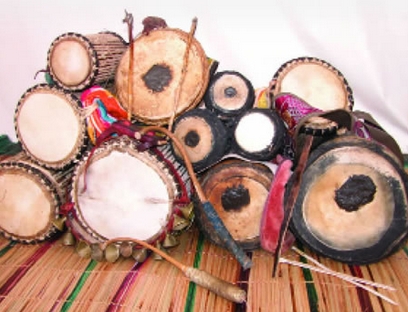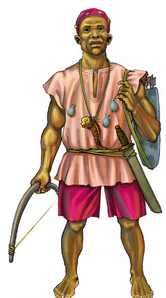
support@yorubalibrary.com
+2348073529208, 07038599574

Drumming holds a central place in Yoruba culture, serving not only as a musical art form but also as a vital means of communication, spiritual expression, and social cohesion. The rhythms and beats produced by Yoruba drums are deeply embedded in the daily lives and traditions of the Yoruba people. This article explores the significance of drumming in Yoruba culture.
The Role of Drumming in Yoruba Culture
Communication
In traditional Yoruba society, drums are used as a means of communication. The talking drum, in particular, can mimic the tonal patterns of the Yoruba language, allowing drummers to convey messages across distances. This method of communication is especially useful during important events, such as festivals, ceremonies, war and community gatherings.
Spiritual and Religious Practices
Drumming plays a crucial role in Yoruba spiritual and religious practices. It is used to invoke deities, accompany rituals, and facilitate communication between the physical and spiritual realms. Drummers are often seen as intermediaries who help bridge the gap between humans and the divine.
Social and Cultural Functions
Drumming is integral to social and cultural activities, including festivals, weddings, funerals, and other communal celebrations. It brings people together, fosters a sense of unity, and enhances the overall experience of these events. Drums are also used in traditional dances, where the rhythm guides the movements and adds to the vibrancy of the performance.
Storytelling and Oral Tradition
Drums are an essential tool in the Yoruba oral tradition, helping to tell stories, preserve history, and pass down cultural knowledge from one generation to the next. The rhythms and beats often accompany storytelling, adding a dynamic and engaging element to the narratives.

Learn about the Yoruba concept of Ìwà Pẹ̀lẹ́ (good…

Learn special praises for Divine Being and Creator…